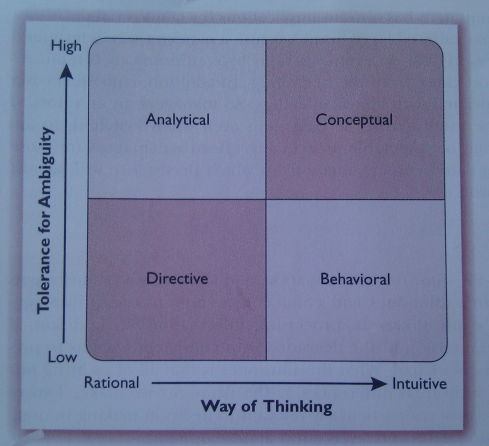
Mårten Mickos - and some source code - on the stage @ TEDxHelsinki
My brain is bubbling after the TEDxHelsinki event – a creatively built lineup of innovative speakers. The themes were exactly those I’ve been working on lately: Entrepreneurship, innovation, age & generations, and leadership. So here are random thoughts I’d like to share.
Entrepreneurship & Social Leadership
Thanks to Aalto Entrepreneurship Society‘s team entrepreneurship has been in headlines during the last couple of months. (Oh, it feels like it was only yesterday when the founder of F-Secure Risto Siilasmaa was the only entrepreneur media was interested in…) AaltoES team have some secret superpower as they have managed to bring legendary startup gurus and leaders to Finland, to coach and to support Finnish startups and to boost the entire startup scene – even our political leaders are becoming curious about this.
To name a few events, firstly, the epic Steve Blank week (I’ve blogged about it here), secondly several politicians have now visited Otaniemi in order to learn what is going on, for example, recently our Minister for European Affairs and Foreign Trade of Finland Alexander Stubb visited the ‘sauna’.
As a nice follow-up for the AaltoES wonders, TEDxHelsinki team had asked three (originally) Finnish entrepreneurs to share their stories with us: William Wolfram, Pekka Viljakainen, and Mårten Mickos. Interesting stories from all three of them.
The youngest of them, 19-year-old William Wolfram shared his story about becoming an entrepreneur at his age, how he dropped the school and now runs a successful online business in the US. William’s motto is: “Don’t get a job. Get a mission. Entrepreneurs change the world.” Good one. A funny fact of William: he was a school mate of my daughter, the previous time I saw him on stage was at my daughter’s graduation, William’s (vocalist) band played at Brändö gymnasium.
The awesome duo then, Pekka “the Bulldozer” Viljakainen and Mårten Mickos, they have both achieved a lot during their careers. Their speeches at TEDxHelsinki were both very personal, genuine & open. The style I like a lot. Pekka told not only about his leadership style (and mistakes) but also about his new ‘No Fear’ book project on which he has worked together with 100+ top leaders around the world. The first reactions towards Pekka’s book idea and its new kind of leadership thinking were: don’t do it, it is impossible, cannot be done. But Pekka stubbornly continued with the project and in the end got most of the leaders to admit that his vision and concept works – and they wanted to join the movement. I recommend you to check out the No Fear Community site and the videos. A funny fact about Pekka: Microsoft’s Steve Ballmer has given Pekka his nickname, the Bulldozer, which must refer to his persistence and diligence.
Mårten’s key message was about outside of the box thinking. He spoke beautifully about our fear towards the new and unknown and respectively about our willingness to rely on our existing problem/solution models that we have stored in our brains. He says: “We are slaves of our habits. Too often we do not recognize the enormous potential around us. That is why we need to re-program, re-wire our brains.” According to him one of biggest challenges of the innovation is however “the big egos” that prevent fruitful collaboration and new kind of business development. I think we’ve all met them…
Interestingly Pekka and Mårten shared two key messages. Firstly, Pekka’s idea on how the fear is killing the opportunities for innovation, and his personal story of the instant resistance for his idea by the top leaders. Exactly the same in Mårten’s story, fear and bad leadership are killing the innovation. As is the big fat obstacle for innovation, our habit of sticking to the models we are familiar with, and neglecting the possibility that “whatever truth you have, the opposite might be possible”, as one of my favorite TEDster, entrepreneur Derek Sivers says in this 6-minutes video.
Secondly, they share the idea of ‘how you can lead’ and ‘who can be the leader’, I am referring Pekka’s words for this: “It’s difficult to lead if nobody wants to follow”. Can you say it more clearly, I doubt that. Mårten had chosen to put it as: “the winner is the one who makes other people to want to follow him/her”.
A leader has to earn it. It is time for social leadership.
It’s also time for More Social Business
The social leadership style that my entrepreneurship idols described, and that is needed right now in the changing business environment, could be crystallized as follows:
It’s all about the people, respect, openness and transparency, shared understanding and responsibility, and about a great amount of courage and hard work. The courage to unlearn from old ways of doing business and leading people.
I find Bulldozers principles of social risk taking quite fitting, see here below in the picture:

Pekka Viljakainen's principles of social risk taking.
I like the ‘value base’ Pekka has built this on. Pekka also describes how young generations see and think the leadership (and often us middle-aged):
“You need to prove your value to the team. You need to earn the right to be their leader. These Digital Cowboys either see you as someone who can help them get things done or an idiot who stands in their way.”
Simultaneously with the new leadership styles and the way of working, we have the new tools that are enabling us to be more social and collaborative than ever before. But that is a topic for another blog post – More Social Business.
Knowledge Workers of the Different Generations
I see, among many others, the field of entrepreneurship and innovation free from any age limits. Yes, the media often prefers to write about the young generation, but I believe that there’s a room for more ageless approach for entrepreneurship, and innovation.
A good example is CEO of StoraEnso, Member of the Board of Nokia, Mr. Jouko Karvinen (54 years old) who was just chosen as The Director of Innovation Year 2011 (a Finnish competition where the three other great nominees were from startup world). Karvinen’s answer to the question ‘how innovations can be led?’ was: “it is a team sport, that must be led from the field, not from the outside of the rink, nor from the stand”. Further Jouko Karvinen explains his 80/20 rule: the ratio of questions and answers by CEO must be 80/20, in that order. Mårten Mickos highlighted exactly the same, more questions needed.
The message of Karvinen, Mickos, and Viljakainen is very clear: leadership must be earned and it must develop very soon, preferably now. Finland and many other nations desperately need innovation as a driver for our success, and outdated leadership must not prohibit that.
My idea is that it requires not only rethinking and learning, but also great deal of unlearning. Despite of the age.
Another personal addition to this topic is that I believe that “for a knowledge worker it is not enough to be a team player, you must be a network player“. I believe that innovation is best nourished “in the edges”, as John Hagel & co describe it in the book The Power of Pull. Serendipitous encounters in the wide network are needed for innovation.
Another great example of innovation and entrepreneurship I’d like to mention here is Mr. Jukka Jokiniemi, born 1962, one of the most touching and amazing speakers at the TEDxHelsinki. He is successfully running his own company Innojok, despite of the fact that he became blind about 20 years ago. He has a great entrepreneurial attitude and he never let his blindness to come in the way. Amazing person, he must be the only blind Design Director in the world! An awesome Rethink Attitude we can all learn from. Lots of respect.
So our chronological age does not matter, our attitude does. Anybody from 19-year-old William Wolfram and the young AaltoES startup teams, to the middle-aged entrepreneurs, as Mårten, Pekka and many others, can be and should be part of the entrepreneurial movement. I am very proud to be one, deeply middle-aged but eager and curious. (I am asked to visit Startup Sauna at the Aalto Venture Garage, and I am excited about it.)
There’s a one more thing I especially liked at TEDxHelsinki: the organizers chose to start the event with young William and close it with an insightful presentation by 85-years old graphic designer and artist Erik Bruun. What a wonderful bridge between the two different generations! The clear common nominator was innovativeness, seeing the opportunity and believing in your own vision, focusing on that and persistently going towards the vision.
Task for myself
After my valuable experiences and discussions in the AaltoES organized events and now in TEDxHelsinki a thought started to spin around in my mind: what else – than talk & blog – can do for the development of the entrepreneurial scene of Finland?
Here’s my idea and its background: I was recently appointed to the Board of the Finnish Software Entrepreneurs. Very glad and proud of it. It is a non-profit association for the entrepreneurs of the Finnish growth companies, a great group of talented people of whom many have already reached a good growing path for their businesses – and yes, there are some startup companies too.
However, a notion of ‘association’ might not sound very compelling for a young entrepreneur…something steel and old-fashioned…but it doesn’t have to be so. I have been active member of it for a few years and many great things are happening there. Those are not getting that kind of publicity as the AaltoES activities, but I believe this will change. So, the next step could be ‘the crossing of chasm’ between the young and the more mature software companies. I believe both would benefit from it.
Accordingly, the task for myself (and for any of you) is to think and act on this: how could we support, stimulate and create the discussions between “the digital cowboys” and people in the more mature software companies? Resulting in fruitful discussions and ideas about the new ways of working together, solving problems, and to innovate. There’s many shared interests and topics here, and of course, a huge learning-from-each-other-potential. We are all swimming in the blue ocean of tacit knowledge.
No fear, but lots of curiosity and open mind, anyone with me?
Thank you – and apologies for the long-ish post…
—
PS. Cisco Finland’s CEO Esa Korvenmaa blogged about this topic too (in Finnish), read it here.
PS2. I think I must buy Pekka’s book now….
PS3. Startup Sauna already does have a great team of coaches from the more mature companies, sharing their knowledge and helping the teams. A good start indeed but not enough for the whole of Finland. Huge respect for the coaches and the team Ville, Antti, Miki, Krista, Linda & co. Special greetings to Aape Pohjavirta!
PS4. I have no funny fact of Mårten!




